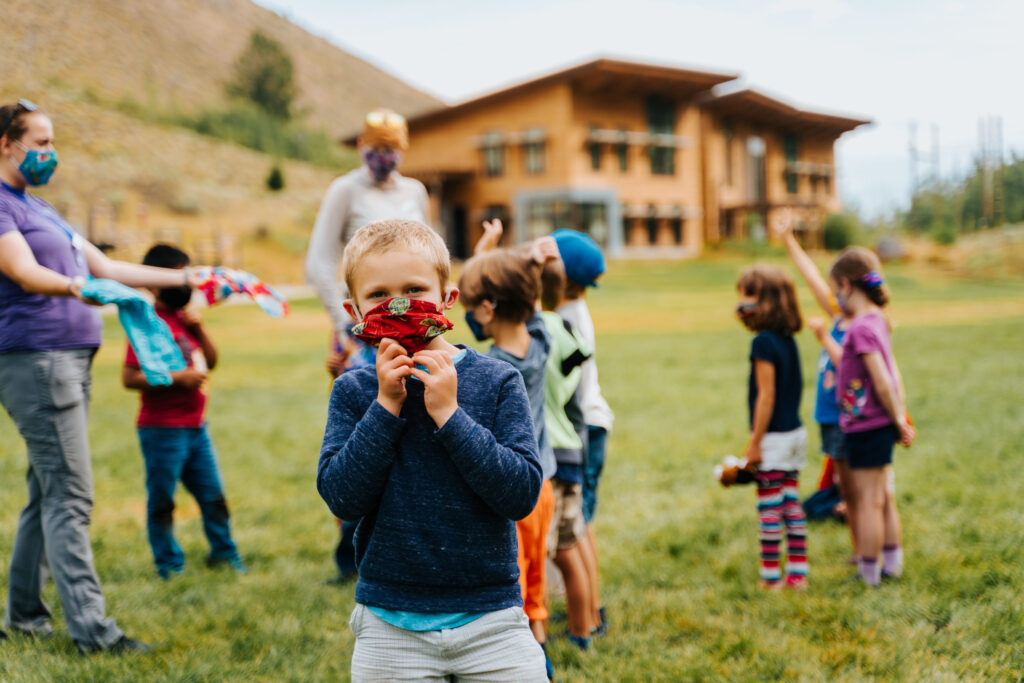“Delta variant is sucking the joy out of back-to-school 2021” reads a recent headline in the Los Angeles Times. For families with school-aged children and education professionals, conversations around the dinner table reflect stories in the news themed around the relief, worry, hope, and uncertainty surrounding the start of a new school year. In this week’s blog, we offer a sampling of those stories along with some ideas for supporting the students and teachers in your life as they return to the classroom.

New York Times – Doubts, Anger, and Anxiety: What It’s Like to Go to School Now
In addition to polarizing debates related to mask and vaccine mandates, new waves of uncertainty regarding classroom health and virus spread in the wake of the latest variant have stolen the thunder from what many hoped would be a fairly normal back-to-school experience. These heated arguments also threaten to drown out the steady drumbeat of public health messaging to students and schools, “Go to school, get the vaccine if you’re old enough, and wear a mask indoors.” The article also highlights a question on many of our minds, “whether a rise in Covid-19 cases, or clusters in schools, will cut short the national experiment in a universal reopening.”
Washington Post – Hopes and fears as schools open their doors for new year
It can feel hard to believe that this is indeed the third school year impacted by the pandemic. Earlier in the summer, the focus was squarely on the extent to which students had fallen behind and the status of their emotional health. Then the arrival of the Delta variant and swift rise in Covid cases took center stage and threw many school districts’ plans back into chaos. The article goes on to detail joyful scenes from students’ first days of school, but the happiness can’t quite overshadow the concern. One school in Las Vegas went so far as to lay out a red carpet for returning students and parents. “First in line was kindergartner Levi Williams, who danced his way along the red carpet as his mother, Tina Williams, followed behind. ‘He’s my little prince,’ she said, laughing. But she is scared. ‘The classrooms aren’t well ventilated. And they’re small.’”

San Francisco Chronicle – San Francisco’s first day of school: Joy and nerves as students return amid pandemic’s delta surge
This regionally-focused piece highlights how students are feeling about stepping into classrooms for the first time in 17 months. “It was, many said, a moment they had dreamed of and at times had lost hope of seeing during the long months of distance learning.” For some high school sophomores, the first day felt like their first high school experience since it was their first time on campus. Such was the case for Wingston Corado, who described “standing outside feeling nervous about barely knowing anyone.” He went on to share “he’s also unsure how safe he feels being in classrooms with the virus surging.” Joy David De Lassy headed into her first day of seventh grade keeping an eye out for classmates she hadn’t seen since elementary school. In the good news category, the article concludes by expressing that many of the students they spoke with made it through their first day just fine.

Ways to Support Everyone’s Well-being
Despite the widespread concern about heading into September 2021 with some deja-vu from September 2020, we’ve learned a lot in the past year that will help us start this school year strong. So if you feel like you’re going back in time, take a look at the article below to set your sights on moving forward.
Education Week – Students Need Emotional Support When Returning to School in Person. Here’s How
This article begins by recognizing the importance of statements like this one from pediatric psychologist Mona Delahooke, “Nobody was immune from the stress of having to leave a familiar environment overnight, and our bodies and brains adapt differently to the new situation.” It goes on to offer suggestions for how educators can support their students’ emotional well-being.
Here’s a summary of the recommendations:
- “Strike a balance between predictability and novelty. Students crave consistency after a trauma, but many have come to dread the choreographed sameness of their days and need more fun, such as an impromptu nature walk where possible or a paper-airplane-making contest. Play and connection activate the social-engagement system and are healing.”
- “Be understanding when addressing misbehavior. After remote learning, “kids are used to using the bathroom any time they want and turning off their cameras and muting themselves so they can have a side conversation,” said James Allrich, Argyle’s principal. “Now, kids will have arrows everywhere, dots telling them where to stand, and I can see a kid being nervous: ‘Am I standing on the right dot? Do I have to put my face mask on between bites when I eat?’”
- “Rebuild students’ sense of competency. Many students had a hard time with online learning, and their academic self-concept has taken a hit. Others feel awkward and have lost their social footing. To address insecurity, be flexible and help students learn to manage their time wisely.”
- “Crank up the connection. Kids disclose more to teachers who take emotional risks themselves. “My students know I’m in therapy; they even know my therapist’s name is Manuela,” Penn said. “It should be normal—everyone needs help. I say, ‘I’m pushing through every day just like you are and I’m really fighting for you.’”
- “Don’t forget that different students have different needs. One parent told me that her middle schooler moved midpandemic and had yet to meet a single classmate at her local public school. New students will need supports, such as welcome buddies and groups for new students.”
- “Work together to create a safety net. Compare notes with your colleagues to ensure no student falls through the cracks. An English teacher might realize a child is struggling when they write a poem about depression. A school nurse might tie a student’s headaches to anxiety. An art teacher might draw attention to a child’s dark self-portraits. A paraeducator might see that a kid always sits alone at recess.”
Additional Resources:
- Child Mind Institute – Back-to-School Resources for Families and Educators
- American Camp Association – 5 Things Camp Professionals Want to Tell School Administrators about Our Kids Right Now
- Center on PBIS – Supporting Schools During and After Crisis
- The Atlantic – Homeroom: Returning to the Classroom Might Not Be Easy


